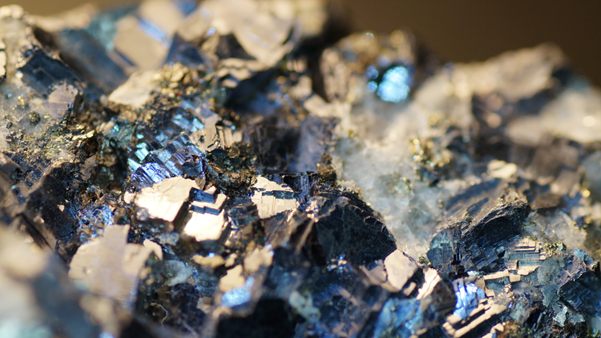Karo Sambhav collaborates with leading organisations to jointly develop industry frameworks, standards, governance mechanisms, systems and processes that advance the transition to circular economy. know more about our alliances.
Reduce, reuse, redesign, recycle: Circular economy is a pragmatic and efficient solution to environmental sustainability.
So, what is circular economy?
If you have missed picking up, the planet is presently coping with unsustainability and environmental degradation. Do you know why? The traditional or linear model of production and management of resources, goods, and services works on the principles of take, make, and waste. Also, the business model promotes short-term consumption of products, leading the planet to crises such as unsustainability. Unfortunately, the time-tested cycle of linear economy has contributed to overwhelming quantities of waste globally. If stats are to be believed:
While waste is a serious problem, the wide-scale adoption of the circular flow of economic activity stands out as a promising solution to manage the overgrowing waste streams. The model is a transition from the traditional approach to lessen waste, reduce the cost of products, lower CO2 emissions, and catalyze maximum use of energy.
Circular economy – the definition
Circular economy is a well-thought environmental protection strategy. The economic model involves reusing, refurbishing, and recycling materials to upkeep the value of products in a closed loop for a longer time. In short, circular economy focuses on reducing wastage by repairing and reusing materials.
In addition to understanding what circular economy and sustainability are all about, it is critical to understand the driving principles of circular economy.
What are the seven principles of circular economy?
1. Waste is a resource
In circular economy, waste has no existence. The biodegradable materials return to nature, and non-biodegradable materials are efficiently reused to extend the life cycle of products.
2. Reuse
Circularity advocates reusing products or parts of products that have life and can be remodelled into new artefacts. This is an efficient step to conserve natural resources and reduce the dependency on mining new raw materials.
3. Reparation
Did you know that not all damaged products reach their end of life? Some products can be salvaged and reused for a second life.
4. Recycle
Circular economy and sustainability rely on the responsible recycling of materials found in waste.
5. Source energy from renewable resources
Circular economy encourages the elimination of fossil fuels to produce a product and reuse or recycle end-of-life consumer products.
6. Rethink eco-friendly designs
The upgraded economy coerces manufacturers, brand owners, and importers to rethink and consider the environmental impacts on the life cycle of products.
7. Valorization
Circular economy supports harnessing energy from waste that’s dumped and cannot be upcycled or reused.
The above-mentioned seven principles of circular economy clearly define how circular economy should work.
The 5 significant pillars of circular economy
Circular economy is a strategic step towards sustainable development. It is unquestionably a broad vision that addresses critical problems such as:
Moreover, knowing more about the primary pillars of circular economy is a good idea. It will help you understand how circularity stands out as the only potential solution to sustainability.
1. Sustainable resources – An increased use of renewable energy resources, biodegradable, recyclable, and renewable materials.
2. Sharing technology platforms – A technology platform that introduces tools to help producers and business owners share and collaborate to maintain the cost of products, services, and resources utilized to create products.
3. Designs catering to extended service life – Rethink the manufacturing and design of products with raw materials that are easy to update, repair, and regenerate to serve a longer life cycle.
4. Introduce products as a service – It is no surprise that technology is at the core of everything today, and a robust circular flow of economic activity is no different. This encourages businesses to implement a holistic service that can be replicated for multiple products to increase the usage factor and service life.
5. New and well-thought lifecycle - Circular economy is a strategic solution that intends to preserve the value of materials at the end of their life cycle. Since the economy is a promising synergy between reusing, regenerating, and recycling, it works wonders in conserving the value of resources.
How does a circular flow of economic activity work to create a sustainable planet?
1. Less waste and lesser pollution
Circular economy and sustainability design economic activities that reverse the adverse impacts of pollution on the environment and human health. For example, harmful greenhouse gas emissions are on the rise and lead to global crises like pollution, global warming, loss of biodiversity, and more. Hence, circular economy leverages technology and strategy to reduce the growing piles of waste, further contributing to the release of toxic greenhouse gas.
2. Prolongs the circulation of materials in a loop
In a circular economy, it’s all about sustainability. Hence, the system encourages producers to rethink designs using recyclable materials for better durability and enhanced use. The economy envisions slowing down the creation of waste and, eventually, pollution. Also, circular economy and sustainability encourage multiple uses for a single material to reduce waste and pollution.
3. Renewing the use of natural systems
If you are not already aware, circular economy ditch the idea of using any form of non-renewable sources of energy, including fossil fuels. The system encourages optimised use of renewable energy resources that is easy to recycle and easier to return all nutrients back to the environment.
To sum up, in a circular economy, nothing is a waste, and nothing is lost. Instead, everything is transformed into value-adding resources. PROs like Karo Sambhav are working round-the-clock to educate all about the importance of circular economy and sustainability. Embrace the change today and contribute to a better, healthy, and pollution-free planet.
Karo Sambhav collaborates with leading organisations to jointly develop industry frameworks, standards, governance mechanisms, systems and processes that advance the transition to circular economy. know more about our alliances.





